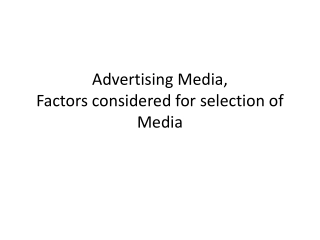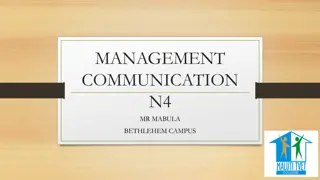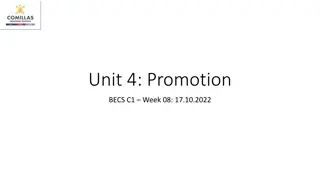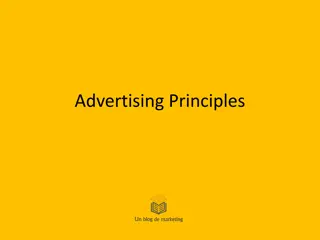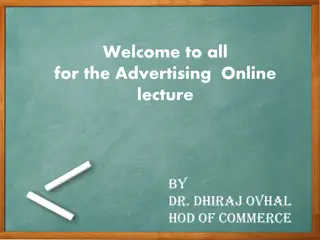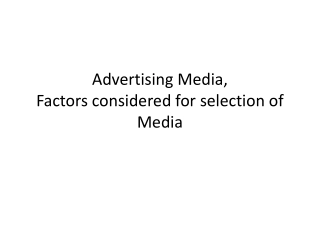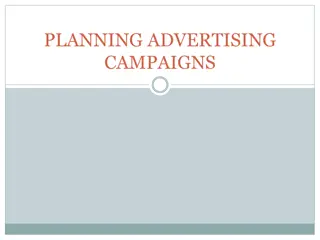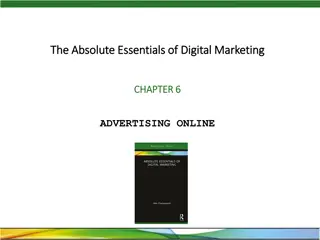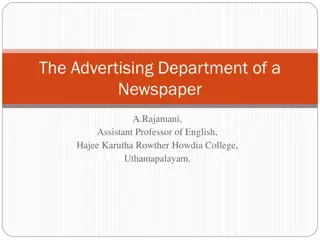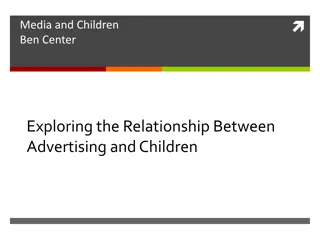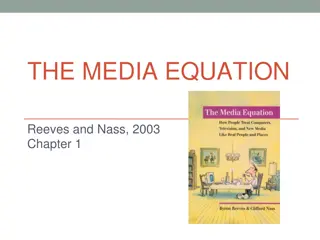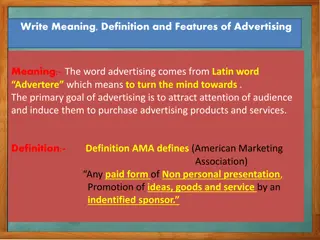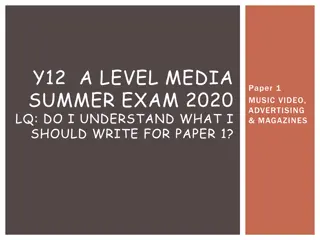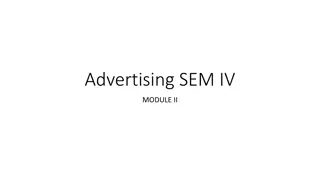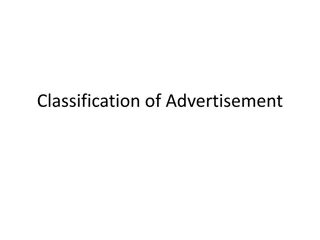Understanding Media Planning and Selection in Advertising
Media planning involves selecting the appropriate channels to convey advertising messages to consumers. Factors such as company objectives, financial position, reach, target audience, and customer receptivity play a crucial role in media selection decisions. Different mediums have varying costs and capabilities to reach specific audience segments effectively. By considering these factors, companies can optimize their advertising efforts and achieve their promotional goals efficiently.
Download Presentation

Please find below an Image/Link to download the presentation.
The content on the website is provided AS IS for your information and personal use only. It may not be sold, licensed, or shared on other websites without obtaining consent from the author. Download presentation by click this link. If you encounter any issues during the download, it is possible that the publisher has removed the file from their server.
E N D
Presentation Transcript
Media or Medium is a means through which the advertising message is conveyed to the consumers. The proper selection of the medium by which the message is to be conveyed, must be selected. Advertising Media: The channels or means through which the advertising message is conveyed to the public are called advertising media. Media Planning: Is the series of decisions involved in delivering the promotional message to the prospective purchaser.
Consideration in Media Selection or Factors influencing Media Selection: Objectives of the Firm : Company s general and advertising objectives are the prime considerations in media selection. Company s objectives may be to inform, remind, convince, and create prestige or to increase sales and profit. Different types of media have different capacity to meet these objectives.
Media Costs and companys financial position : Media selection decision is highly influenced by media cost and firm s ability to pay. Company has to pay for buying space or time and preparing advertising copy fit for the media to be selected. TV, radios are costly in terms of buying time and preparing advertising copy. Print media are relatively cheaper in both space and preparation of ad message. Some outdoor media are quite low in lost. As per media costs and company s financial capacity, the appropriate media should be selected.
Reach or Number of people exposed to the message : Reach means the number of the different people exposed to a particular medium at least once during a specified time period, Mass media are capable to reach millions of people by just one exposure. Television has more exposure capacity compared to outdoor media in a particular time. Company s Advertising Policy and Approach : If company s policy is not to spend more money for advertisement and to offer the product at a low price, it may go for cheaper media.
Type of buyers : People to be influenced should be taken into account while selecting the media. Buyers can be classified into various classes. Each medium has its special viewers, readers or audience. For the firm it is important to know whether the target groups can be exposed by the particular medium. Condition under which customers are influenced: Viewers / Readers mood and interest determine receptivity of message. Television is the best medium to associate advertising message when people are watching or enjoying related programs.
Circulation / Coverage : Some media are capable to cover the globe while some can cover only the limited locality. Eg: The local newspapers cover limited areas, the national newspaper cover the whole nation. The area covered by the medium is an important criterion. Repetition or Frequency : Reception or frequency implies the number of times within specific time period an average person is exposed to the message by specific medium. Most of the outdoor media hold the message for relatively long time. Magazines or periodicals publish monthly or quarterly; mostly they publish advertisement only in a particular edition.
Credibility and Image of Media : Advertising message appearing in the reputed newspapers and magazines carrys heavy impression and effect than substandard media. People do not trust appeal published in the low standard media. Prestige of media becomes the prestige of advertiser. Firms opt for credible or prestigious media to carry the advertising message. Past Experience : Company s own past experience may be instrumental to decide on advertising media. If company has satisfactory experience of using a particular medium there are more chances to use the same medium and vice versa.
Experience of other companies : Company may try to know what other companies say about applicability and usefulness of various media. Views of other companies must be followed with care and caution. Types of Advertising Message : Each advertising message needs specific advertising vehicle. If a message is simple, print media are sufficient. If a message is complicated, and the company wants to demonstrate and explain, audio visual media suits the need.



